
Kirsten McCarthy / Cats.com
Diabetes, a hormonal condition that affects blood sugar levels, is well known in people. But did you know that cats can be diabetic too? In our feline companions, diabetes causes symptoms such as urinating and drinking more, as well as weight loss. More common in overweight, middle-aged to older cats, it is treated using insulin injections and a strict diet.
In this article, learn more about what diabetes is, the symptoms in cats, diagnosis, care and treatment.
Quick Overview: Feline Diabetes







What Is Diabetes?
Diabetes mellitus (usually just called diabetes) is a hormonal condition affecting sugar metabolism. It happens when there is not enough insulin in the body. This can be an ‘absolute deficiency’, where not enough insulin is made by the pancreas, or a ‘relative deficiency’ where there is insulin available but the body cannot respond to it (insulin resistance) – or a mixture of both!
Cats get a type of diabetes most similar to human Type 2 diabetes, where the body responds poorly to insulin, often combined with a lack of production.
Normally, each time your cat eats a meal, beta cells in their pancreas trigger the release of insulin, which streams into your cat’s blood and attaches to and unlocks cells, allowing them to absorb energy-giving sugar. Without insulin, glucose is incapable of converting to fat and energy in the body. If insulin is the key, glucose in a diabetic cat’s body is like a person locked out of their house. Unable to do anything useful, the sugar builds up in the blood.
Causes

Diabetes is more common in overweight and sedentary cats. Affected kitties are usually middle-aged or older. Liz Coleman / Cats.com
Cats usually suffer from the Type 2 kind of diabetes, caused by abnormalities in their pancreas. Affected cats respond poorly to their own insulin, which is called insulin resistance. Over time, without treatment, prolonged insulin resistance and high blood sugar levels result in even less insulin being produced by the pancreas. Diabetes can occur in any age or breed of cat, but tends to affect middle-aged and older cats. Some breeds, such as the Burmese, may have a genetic predisposition to develop diabetes, and so are at higher risk.
Risk Factors
As well as genetic factors, there are certain aspects of feline life that can make cats more prone to developing diabetes. Similar to humans with Type 2 diabetes, the disease can be affected by dietary and lifestyle factors, and can be secondary to certain other conditions or medications.
Risk factors in cats include:
- Obesity
- A sedentary lifestyle
- Some medications such as steroids
- Some illnesses such as pancreatitis
Symptoms
The increased levels of sugar in the blood that are characteristic of diabetics lead to some common symptoms. As glucose builds up in the bloodstream unable to be used by the body, it will reach a threshold where it “spills” into the urine. Glucose in the urine acts as a diuretic, leading to the most common signs of increased urinating and drinking. The signs can come on gradually over time, or appear quite suddenly.
Here are the common signs:
- Increased thirst (polydipsia)
- Increased urination (polyuria)
- Increased appetite
- Weight loss
- Lethargy
There are also some lesser known symptoms of diabetes in cats:
- Vomiting
- Weakness or collapse
- Increased likelihood of infections such as urinary tract infections
Complications of Diabetes

Cats with diabetes can become very weak and lethargic if the by-products of fat and protein digestion (ketones) build up in their body. Liz Coleman / Cats.com
Insulin is a really vital hormone, and changes to either the levels of insulin or the body’s response to it can cause a range of problems.
Insulin is crucial to maintain suitable blood sugar levels, but it’s also needed for the transfer of sugar from the blood to the cells. If the body’s cells are not receiving sugar for energy, they start breaking down fats and proteins instead.
This process can result in by-products called ketones, which can make pets very ill. A buildup of ketones in the body causes a condition called diabetic ketoacidosis (DKA). Signs that your cat is in a state of DKA include fruity or acetone-scented breath, lethargy, loss of appetite, vomiting and collapse.
A further complication is known as diabetic neuropathy. It affects about 10% of cats diagnosed with diabetes and usually develops after a few months of untreated diabetes. Diabetic neuropathy typically affects the femoral nerve (a major nerve in the leg), causing weakness of the legs and something called a plantigrade gait.
You and I have a plantigrade gait—we walk on the soles of our feet. Cats usually walk on their toes. When they have diabetic neuropathy, cats often walk on their hocks or heels. Diabetic neuropathy is usually reversible with glycemic control through insulin therapy, diet, and healthy lifestyle.
Diagnosing Diabetes in Cats
If your pet is showing any potential symptoms of diabetes, such as excessive thirst or urination, a trip to the veterinarian is recommended.
Your cat will need bloodwork and urine testing to diagnose diabetes, although it may be suspected after a physical examination and a discussion of the symptoms. Bloodwork and urine testing will both reveal persistent high levels of glucose.
Stress in cats can cause them to have a transient rise in blood glucose, so your vet may suggest further testing to ensure they definitely have diabetes. One such test is called fructosamine, which represents an average blood sugar over the previous couple of weeks and is not affected by stress.
Your vet may also decide to keep your cat in the veterinary hospital for some further testing. Your cat may also need to be hospitalized for stabilization and initial treatment.
Treatment
Diabetic patients usually require injections of insulin, once or twice daily. There are different types of insulin, and different methods of injection, so you and your veterinarian can discuss a treatment plan that works for you and your cat. Injections are usually given just after a meal, to reflect natural insulin releases which occur when eating.
Your pet will start on a fairly low dose of insulin, calculated based on weight and designed to prevent accidental hypoglycemia (low blood sugar). This dose will then need to be adjusted over the first few weeks, based on blood sugar measurements.
These measurements may be taken at the clinic where several blood samples are taken over the course of the day, which is called a curve. Your vet uses these values to see what the blood sugar is doing over the course of the day in order to make adjustments.
It’s important for blood sugar to remain lower than 300mg/dl but preferably higher than 100 to reduce the risk of hypoglycemia occuring when the blood sugar drops below 60.
Alternatively, some owners are happy to learn how to check their cat’s sugar levels at home, to reduce the stress of veterinary visits.
Checking Glucose at Home
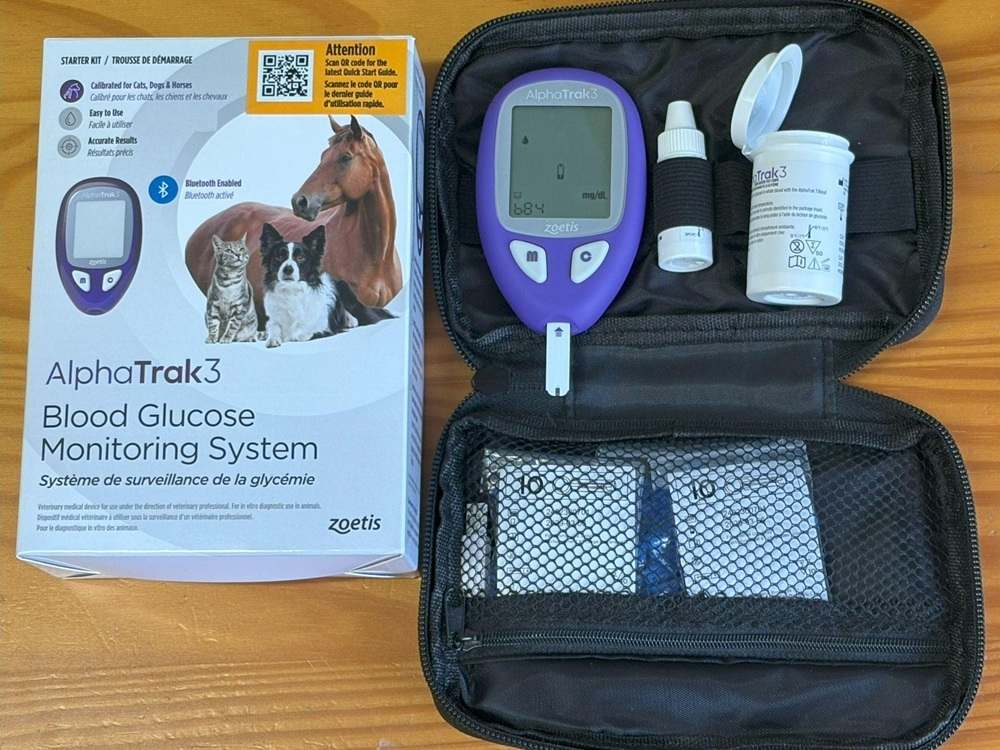
The Alpha Trak 3 blood glucose meter is the most common one used for pets in animal hospitals and can be used at home to check your cat’s blood sugar. Chris Vanderhoof / Cats.com
The AlphaTrak3 is a glucometer designed for cats and dogs which can be used at home to get blood sugar measurements. This does require small pin pricks to collect blood, usually from a foot pad or ear tip.
Another option is with a continuous glucose monitoring (CGM) or flash glucose monitoring system, such as the FreeStyle Libre 3 Plus. While designed for humans, these continuous glucose readers have been used in pets for a couple years.
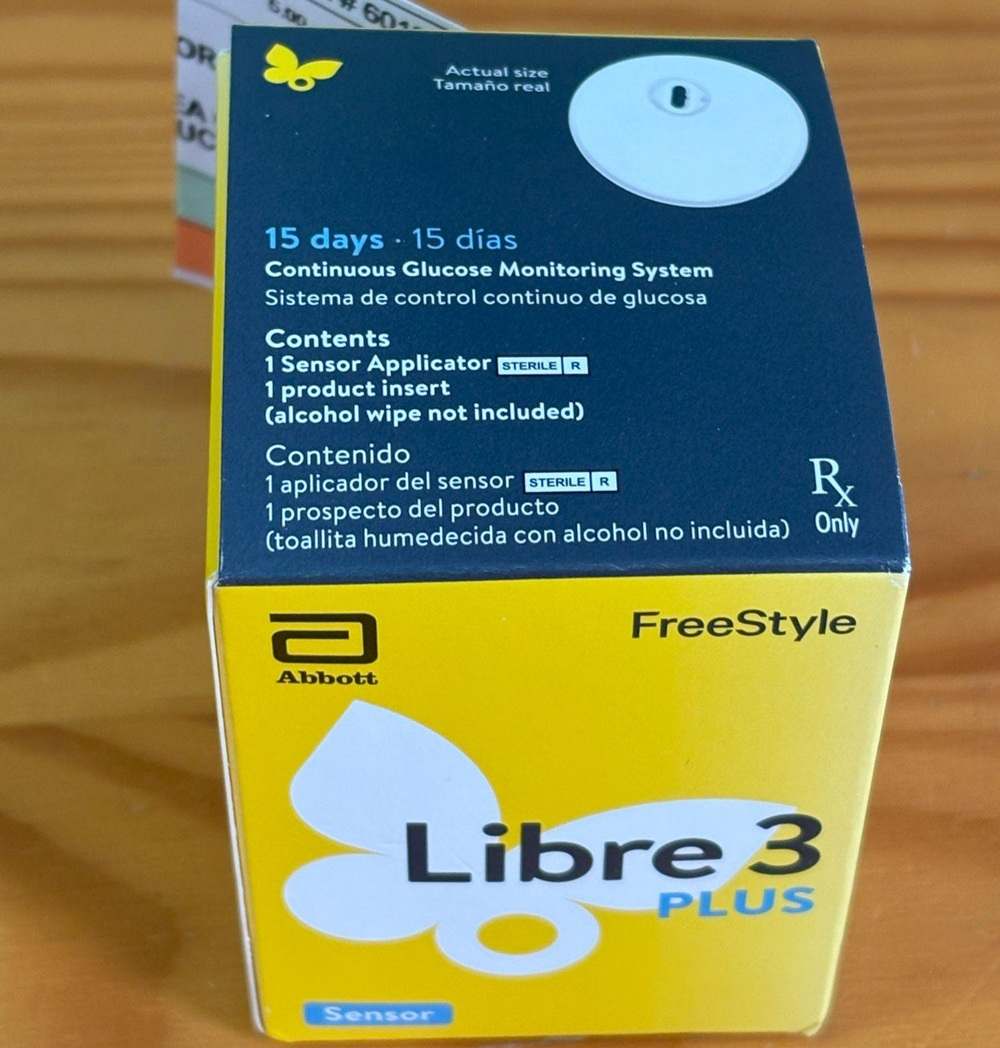
While a prescription is needed, the FreeStyle Libre 3 Plus may be a less stressful option to check your cat’s blood sugar at home. Chris Vanderhoof / Cats.com
They provide a good alternative to constant pin pricks and pokes. A patch with a tiny needle is attached to the skin, which is able to collect continuous glucose readings through what’s called interstitial fluid, or the fluid just under the skin.
The reader remains attached for at least a couple days, but will continue to provide readings for up to 15 days. The glucose is recorded using either a scanner or an app on your phone. The readings can then be sent to your vet for them to interpret.
The monitors can sometimes be a challenge to attach to a pet’s skin, not being designed for animals with fur. But many vet hospitals have become more skilled over the years in learning ways to attach them more effectively. A surgery recovery suit or onsie designed for cats can be helpful to cover and protect the monitor.
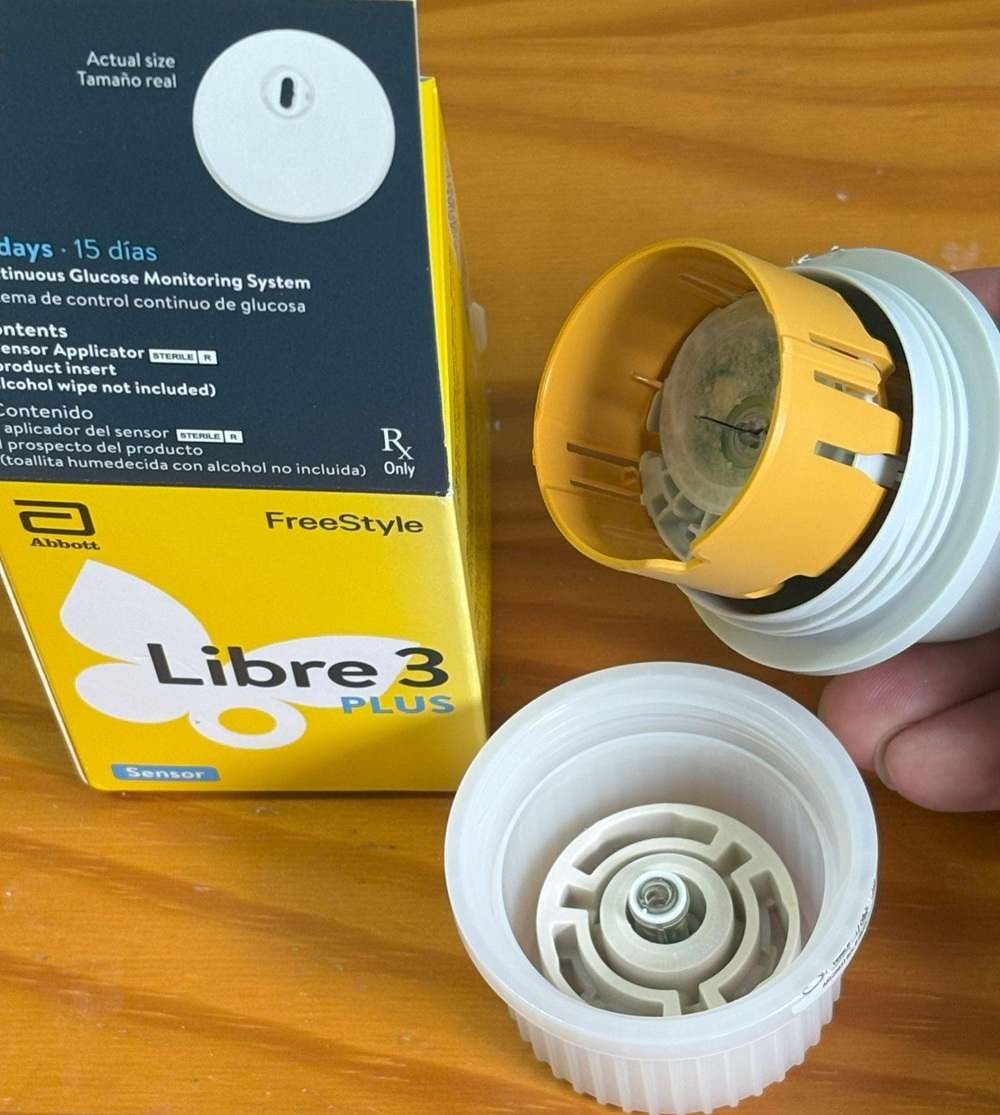
It may be most helpful for veterinary staff at your local hospital to apply the FreeStyle Libre 3 Plus for you to help ensure it is placed correctly and is secure. The device can be applied on a cat with low stress. Chris Vanderhoof / Cats.com
The FreeStyle Libre does require a prescription from your vet. Prescription coupon services like GoodRX can be helpful to assist with cost.
In the early stages of diagnosing and controlling diabetes with insulin, it is important to be patient, as it can take some time.
Treating with Insulin
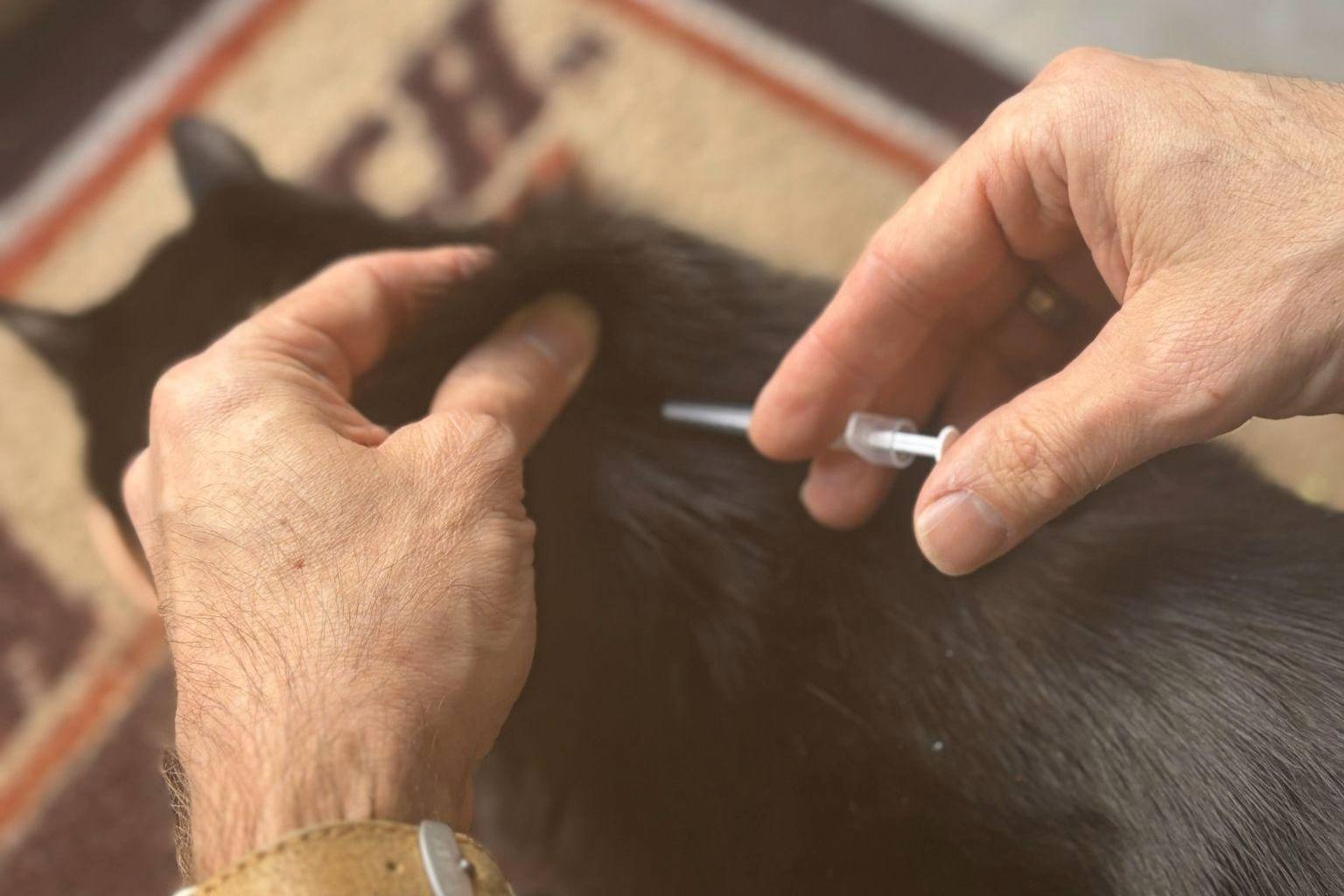
Insulin injections are best given during a meal. The skin over the shoulders is pinched lightly and raised with the insulin syringe needle inserted in the space underneath. A food-motivated cat like Bart here may not notice the injection at all. Chris Vanderhoof / Cats.com
Treating diabetes with insulin injections under the skin is the most common and accepted way to treat diabetes in cats.
While this may seem daunting, almost anyone can learn to do the injections with a little practice. The needle used is considerably smaller than the smallest one used for vaccinations, and many cats will not notice the injection.
It’s important that your cat eats a meal around the time of the injection. This can also double as a good distraction for food motivated cats to receive their insulin injection while they’re preoccupied with food.
It is possible for cats receiving insulin injections to go into diabetic remission. Remission is when a cat reverts from being diabetic to being able to control their own blood sugar again.
The insulin type most often used is called glargine insulin. The most common brand name is Lantus. Glargine is a synthetic form of human insulin. It is a long-acting insulin, meaning that it is given every 12 hours.

The proper technique for pulling up insulin from the Lantus insulin pen. The 3ml insulin pen can be more cost-effective for most cats compared to the larger 10ml vial. Chris Vanderhoof / Cats.com
Glargine insulin has been associated with some of the highest remission rates, anywhere from 50-80%.
Insulin expense can be a big concern. Lantus does have a smaller volume insulin pen, which is only 3ml instead of the 10ml bottle. As most cats will not need more than 2-3 units per insulin dose, one smaller volume insulin pen can last a couple of months, and is easily half the cost of a 10ml bottle.
The insulin pen is best used just like a vial. With the cap removed, you simply draw the insulin out with a syringe, the same as you would with the larger vial. There is no need to purchase the insulin pen needle attachments.
While instructions indicate that an insulin vial should be discarded after 30 days, most can continue to be safely used for at least 3 months. Extending an insulin vial use for longer may be possible, but carries a higher risk of being less effective for blood sugar control.
If you ever have concern that you are giving injections regularly as normal and your cat has started to show signs of excessive drinking, urination, and weight loss again (while previously well controlled), replacing insulin should be considered as well as checking a blood glucose curve.
Remission is also best achieved when twice daily insulin therapy is enacted as soon as possible after diagnosis and when dietary modifications are also made.
Even with a high chance of remission, it is possible for a cat to relapse and become diabetic again.
Oral Medications
There are oral hypoglycemic medications available, to avoid having to inject. However, these drugs have a 5-30% success rate, which isn’t particularly impressive. Remember, insulin injection isn’t just more effective than pills – it’s safer.
In addition to potential hypoglycemia, oral diabetic drugs such as glipizide are associated with side effects including vomiting, loss of appetite, and jaundice. And as most people realize after a couple of weeks of trying to pill their diabetic cat twice a day, the reality of pilling a cat is more frightening than injecting your cat with a thin hypodermic needle!
Bexacat and Senvelgo
There is a newer class of oral medications called sodium-glucose cotransporter 2 (SGLT2) inhibitors. One is called bexagliflozin (Bexacat) and the other is velagliflozin (Senvelgo).
What these medications essentially do is push glucose out of the bloodstream and into the urine by preventing the kidneys from reabsorbing it. This greatly increases urinary excretion of glucose, removing it from the body.
These medications offer an alternative to insulin injections, but are not truly a replacement for them. They do normalize a cat’s blood sugar levels but do not assist in making glucose more available to cells. As such, there are cases where they cannot be used and have their limitations.
The biggest situation where these can’t be used is in cats who have already been treated with insulin injections. They can only be used for newly diagnosed diabetic cats who have not yet been treated for diabetes.
Cats also must be otherwise healthy. Extremely sick and dehydrated diabetics and diabetics currently experiencing diabetic ketoacidosis, are not candidates for these medications.
Because glucose is not made more available to the body as with insulin injections, it is possible for a cat to develop diabetic ketoacidosis on these medications, while still having a normal blood sugar. This can make DKA more challenging to diagnose and treat.
For similar reasons where glucose cannot be utilized better by the body, a cat will not be able to go into diabetic remission if this treatment option is chosen.
Cats may also maintain some degree of increased thirst and urination, as glucose is pushed into the urine, still causing its diuretic effect.
While your vet may wish to check blood sugar levels to help understand the medication’s effects on your cat’s blood glucose, the medication dose is given regardless of what blood sugar levels look like.
This does limit the need for blood testing and the stress of pokes, which is certainly appealing to some cat owners. In cats that do well with an oral medication, this route may be a preferable choice for a new diabetic, understanding the risks and limitations.
Senvelgo and Bexacat offer two different oral medication options. Senvelgo is an oral liquid, while Bexacat is a flavored tablet.
Diet
As diabetes in cats is highly linked to factors such as obesity, diet and lifestyle, getting your cat onto the correct diet for a diabetic is really important. Your vet will be able to advise you, but it is generally recommended for diabetic cats to be on a high-fiber, low-carbohydrate food. Diet appears to be very key in assisting with and helping to maintain diabetic remission in cats. There are prescription diets designed for cats with diabetes, like Hill’s w/d or m/d, Purina OM, or Royal Canin Glycobalance.
In cases where a prescription diet may not be affordable, some vets advocate feeding a moist or wet food diet exclusively. This can assist with preventing blood sugar spikes given the tendency for moist/wet foods to be lower in carbs and higher in protein and water content.
It is very important for cats to be on a meal-feeding type of schedule to help manage blood sugar and insulin response. If a cat is eating free-fed throughout the day, blood sugar may spike at multiple times, making glycemic control more difficult. Feeding a diabetic cat twice a day, morning and evening, when they receive insulin injections, is the most reliable way to control and monitor their blood sugar response.
It’s easy to panic if your cat is diagnosed with diabetes. There’s no doubt that this is a serious disease, and requires what some would consider fairly intensive management and ongoing care. Some owners may even consider that euthanasia may be the best option.
However, diabetes is very manageable in cats, and most respond very well to insulin and dietary change. Maintaining routine is the most important part. The prognosis for a stable diabetic is very good, and although daily injections may seem daunting, both cat and owner usually adjust very quickly to the new routine.
How to Care For Your Diabetic Cat

A strict routine and careful control of diet and insulin therapy are essential for diabetics. Kirsten McCarthy / Cats.com
Diabetic patients require careful management to achieve successful control of their blood sugar. There are a few tips to consider at home.
Routine
Diabetics do best with a fairly strict schedule. Insulin injections and meals need to be given at set times of day for best effect, and diabetic cats shouldn’t miss a dose, or a meal. Appropriate weight management, controlled feeding and exercise schedules are all helpful for best management of this condition.
Watch Out for Signs
Diabetic cats need to be monitored carefully, as insulin requirements can change with age and progression of the disease. Cat owners need to pay attention to their cat’s litter box habits, appetite, thirst and weight.
Hypoglycemic episodes can also be a problem, so keeping an eye out for your cat being lethargic or wobbly is essential.
Keep Records
It can be really helpful to keep a diary if you have a diabetic cat. Record their insulin dose and their feeding schedule, and any changes to their routine. If you elect to monitor blood sugar levels at home, these need to be written down as well.
It can also be really useful to keep track of your cat’s thirst, appetite and weight. All of this information can help your veterinarian provide the best advice for your individual kitty.
-
Jacquie S. Rand and others, Canine and Feline Diabetes Mellitus: Nature or Nurture?, The Journal of Nutrition, Volume 134, Issue 8, August 2004, Pages 2072S–2080S, https://doi.org/10.1093/jn/134.8.2072S
-
Jacquie Rand, BSAVA Manual of Canine and Feline Endocrinology, Chapter 13, pp 133 - 147, 2012 British Small Animal Veterinary Association
-
Gottlieb, S., & Rand, J. (2018c). Managing feline diabetes: current perspectives. Veterinary Medicine Research and Reports, Volume 9, 33–42. https://doi.org/10.2147/vmrr.s125619
-
Feline diabetes. (n.d.). Treatment and Prevention in Cats.
-
Therapeutic Goals for otherwise healthy Diabetic Cats - WSAVA2004 - VIN. (n.d.).




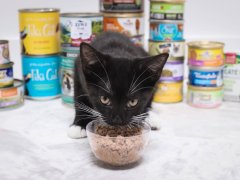


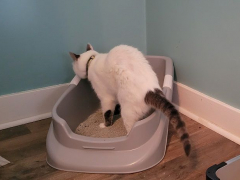
I WANT TO KNOW THE BEST, NOST EFFECTIVE WAY TO TREAT DIABETIC NEUROPATHY – STOP THE DETERIORIZATION IN MY CAT.